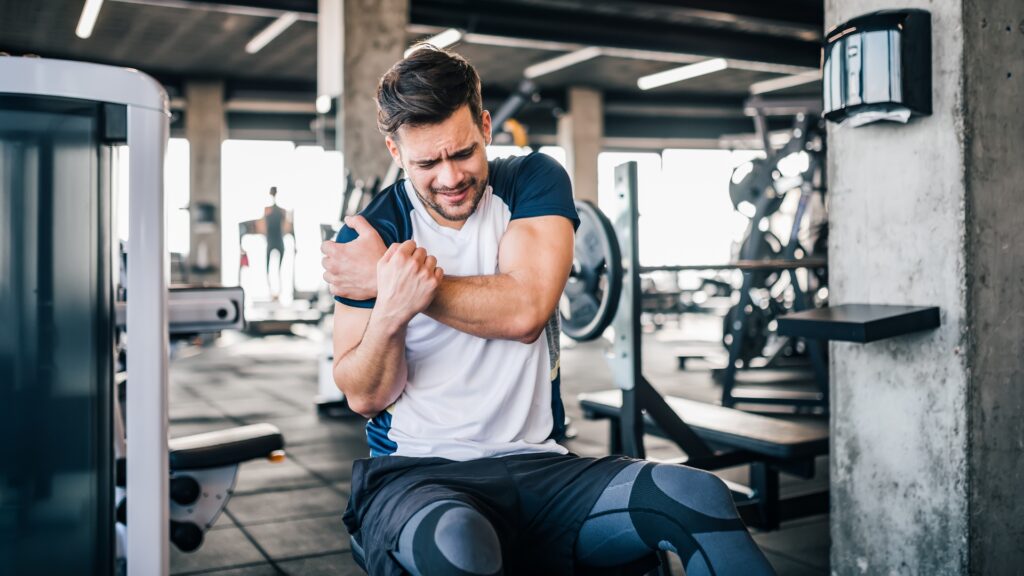As we all know, regular exercise and physical activity are essential for maintaining good health and well-being. They enhance cardiovascular health, strengthen muscles, improve flexibility, and even boost mental health by reducing stress and improving mood.
However, with any type of physical activity comes the risk of injury, which can range from mild muscle strains to more severe issues like sprains or overuse injuries. Whether you’re a professional athlete, a fitness enthusiast, or a casual gym-goer, it’s crucial to take the necessary precautions to prevent common workout injuries.
Proper warm-up routines, using the correct form, and gradually increasing intensity are just a few ways to minimize risk. In this guide, we’ll delve into some practical tips and strategies to help you stay safe, maximize the benefits of your workouts, and achieve your fitness goals injury-free.
Common Causes of Exercise Injuries

Some of the most common types of workout injuries include strains, sprains, muscle tears, and overuse injuries. These can occur in any part of the body, such as the back, shoulders, arms, legs, or ankles. Understanding the common types of injuries and their causes can help you take necessary precautions to avoid them.
1. Improper Technique
Using incorrect form or technique during exercises is one of the leading causes of workout injuries. This could occur while performing common strength-training exercises like squats, deadlifts, or even simple bodyweight movements such as push-ups. Improper technique places undue stress on joints, tendons, and muscles, which may lead to strains, sprains, or even more serious injuries like herniated discs. Consistently working out with poor form can also result in long-term musculoskeletal issues, limiting mobility and increasing the risk of chronic pain.
2. Overtraining
Pushing your body too hard without allowing adequate time for rest and recovery can lead to overtraining syndrome. Overtraining often results in physical fatigue, weakened muscles, and a higher susceptibility to injuries like stress fractures and tendonitis. It can also impact your mental well-being, causing burnout or a loss of motivation to exercise.
3. Lack of Warm-Up
Skipping a proper warm-up is another common cause of injuries. Warming up prepares your muscles, joints, and cardiovascular system for more intense activity by gradually increasing blood flow and flexibility. Failure to warm up means your muscles remain stiff and less elastic, making them more prone to tears or strains. Injuries from this oversight are often sudden and can keep you sidelined for weeks.
4. Using Improper Equipment
Using the wrong type of equipment or wearing unsuitable footwear can contribute significantly to workout injuries. For example, running in shoes lacking proper support can lead to foot or ankle pain over time, while poorly adjusted gym equipment can cause joint misalignment. Improper equipment not only decreases workout effectiveness but also heightens the risk of accidents and chronic pain-related issues.
5 Tips For Preventing Injuries During Workouts
Preventing injuries involves multiple factors, and while it’s impossible to eliminate the risk entirely, there are steps you can take to reduce the chances of getting hurt. Injury prevention is multifaceted, but certain practices can help you stay injury-free. So, here are some key tips from our experts to keep in mind:
1. Warm Up Properly
A proper warm-up is essential before any workout to prepare your body for physical activity and reduce the risk of injury. Dynamic stretches, light cardio, or mobility exercises can increase blood flow to your muscles, improve your range of motion, and enhance flexibility. A well-rounded warm-up typically lasts 5–10 minutes and is tailored to the intensity and type of workout you’re about to perform. Skipping a warm-up can leave your muscles tight and more prone to strains.
2. Focus on Good Form
Maintaining correct form during exercise is critical to avoiding injuries. Poor form can place unnecessary stress on your joints, tendons, and muscles, leading to long-term damage. Whether you’re lifting weights, running, or performing high-intensity movements, always emphasize posture and technique. If you’re unsure about your form, consulting a trainer or using mirrors to self-check can help you correct mistakes. Proper form not only prevents injuries but also ensures you’re getting the most out of your exercises.
3. Progress Gradually
Increasing your workout intensity too quickly is a common mistake that often leads to injuries. Sudden changes in volume, resistance, or workout complexity can overwhelm your body, resulting in strains or overuse issues. Progress in gradual increments by adding small amounts of weight, increasing your repetitions, or extending your workout duration over time. Listening to your body and allowing it to adapt is key to safe and effective progress toward your fitness goals.
4. Stay Hydrated
Proper hydration and nutrition are crucial for injury prevention. Dehydration can cause muscle cramps and increase the likelihood of fatigue, which may lead to poor form or accidents during exercise. Additionally, eating balanced meals with adequate carbohydrates, proteins, and healthy fats provides the energy required for optimal performance and recovery. Always hydrate before, during, and after your workouts, and ensure you’ve consumed enough fuel to support your activity level.
5. Include Rest And Recovery Days
Exercise creates tiny tears in muscles. Rest days allow them to repair and grow stronger. Without recovery inflammation builds and joints bear undue stress. Schedule at least one full rest day weekly. On other days alternate muscle groups. For example pair upper body workouts with lower body days to let specific areas heal.
Active recovery counts too. Try yoga swimming or walking to promote circulation without strain. Sleep 7-9 hours nightly since the growth hormone released during deep sleep aids tissue repair. Treat rest as non-negotiable not lazy. Your body isn’t a machine.
Conclusion – The Bottom Line!
Preventing workout injuries hinges on patience awareness and respecting your body’s needs. By warming up properly progressing gradually and prioritizing recovery you build a foundation for lifelong fitness. Small consistent choices protect your joints and muscles better than any quick fix. Remember fitness is a journey not a race. Adapt your routine as you grow stronger and celebrate progress without comparison. Your body is your greatest ally. Treat it with care and it will carry you further than you ever imagined.



